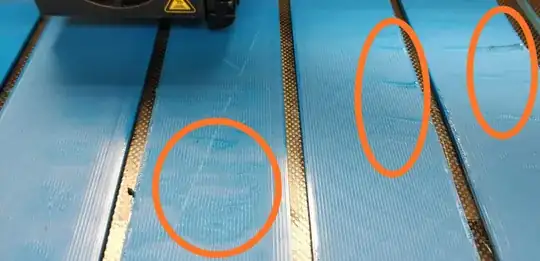I am printing 5-152 mm(L)x35 mm(W)x3 mm(T) samples using a commercial PLA filament with 0.1 mm layer height (30 total layers). The raster width is 0.4 mm while the raster angle in all layers is 0/0°. The bed temperature was 0 °C, while the printing temperature was 220 °C. The printing speed was 60 mm/s. The Z-axis compensation value was 0. The slicer I am using is Ultimaker's Cura, while the printer is Creality's Ender 6. The sample on the extreme right is nearly flawless (I am at a loss why is that) but all other samples show the kind of creases that are formed if one irons the cloth improperly or shows distortions resembling speed humps (circled in the image).
Can anybody who has encountered this problem before, enlighten me about the cause of this structural defect? As one can appreciate, layers laid atop these defects would be reflecting these as well.
